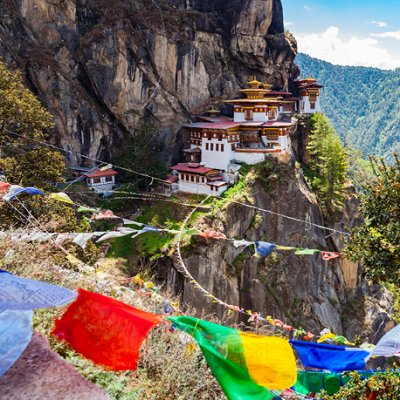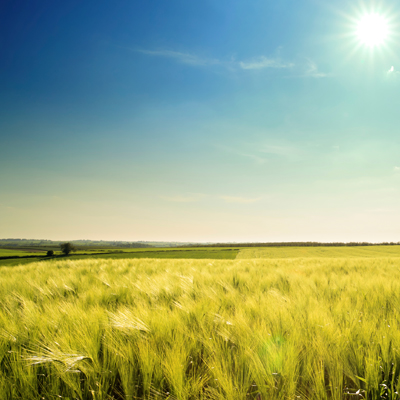Contact Dr Kriti Mukherjee
Background
My passion lies in the realm of remote sensing and geospatial data analysis, where I specialize in leveraging geographic information science, photogrammetry, image processing, data science, and machine learning to explore and model environmental changes and extreme events.
I embarked on my professional journey as a Scientist at the National Technical Research Organization in New Delhi, India, a premier technical intelligence agency under the National Security Advisor. While there, I completed my PhD in hyperspectral remote sensing, where I developed an innovative method for dimensionality reduction of hyperspectral data using fractal mathematics.
My career then took me across the globe, from Germany and Thailand to Canada and the UK, where I refined my expertise in environmental monitoring and geospatial analysis. Throughout this journey, I made substantial contributions to high-impact research projects, focusing on the impacts of climate change, assessments of natural disasters, and agricultural land suitability. These experiences have enriched my understanding of our planet's dynamic systems and have fueled my dedication to using cutting-edge technology to address critical environmental challenges.
Research opportunities
My research explores the critical intersection of water resources, climate change, and sustainable development, focusing on how shifts in precipitation patterns due to global warming impact various environmental systems. Water, whether influencing glacier retreat, agricultural viability, or natural disasters like floods, droughts, and landslides, can have severe consequences if the resources are not fully understood and the risks are not properly assessed. Given the increasing frequency of extreme precipitation events, understanding and predicting these occurrences is crucial. However, existing models often struggle to accurately capture such events, particularly in regions with sparse observational data. My research aims to bridge these gaps by integrating dense meteorological data, remote sensing, and modeling techniques to better predict and mitigate the impacts of extreme weather on both human and natural systems. Opportunities in this field are vast, ranging from improving precipitation models to characterizing risks for agriculture and infrastructure, particularly in under-observed and more exposed regions.
Please get in touch if you are interested to co-develop research ideas.
Current activities
My research is primarily focused on comprehensively assessing and continuously monitoring both short and long-term transformations in land resources. I have a particular interest in understanding how these resources are affected by climate changes and extremes. Within the realm of cryosphere research, my passion lies in studying high mountain glaciers.
Expanding my expertise, I am delving deeper into understanding geohazards induced by climate, glaciers, and land. This exploration involves investigating the potential threats these hazards pose to the accessibility and utilization of available resources.
As an active member of the Cranfield Land Information System (LandIS) team, I play a significant role in leveraging extensive soil data covering England and Wales. This dataset offers valuable insights into our land resources. Through close collaboration with esteemed organizations, we are collectively seeking solutions to mitigate the impacts of climate change, in alignment with the UN Sustainable Development Goals (SDGs).
Recognizing the significance of disseminating knowledge, I am actively engaged as a lead and co-author in the creation of several impactful publications. I extend my sincere gratitude to my collaborators whose support has played a pivotal role in shaping the aims and outcomes of my research.
Clients
- Environment Agency
- Flood Re
- Department for Environment, Food and Rural Affairs
- Natural Environment Research Council
- Natural England
Publications
Articles In Journals
- Bhattacharya A, Mukherjee K, Ghuffar S, King O, Bolch T, .... (2025). Variabilities in Climate Sensitivities and Mass Balance of Four High Mountain Asian Glaciers.
- Hannam JA, Keay CA, Mukherjee K, Rugg I, Williams A, .... (2025). Changes in land capability for agriculture under climate change in Wales. Science of The Total Environment, 987
- Mukherjee K, Bhattacharya A, Ghuffar S, King O, Paul A, .... (2025). Variabilities in climate sensitivities and mass balance of four High Mountain Asian glaciers. Global and Planetary Change, 255
- S N R, Nandan V, Bhattacharya A, Srinivasalu P, Mukherjee K, .... (2025). Glacier calving and moraine collapse triggered the glacial lake outburst flood in South Lhonak Lake, Indian Himalaya. Environmental Research Communications, 7(11)
- Mukherjee K, Rivas Casado M, Ramachandran R & Leinster P. (2024). Harnessing long-term gridded rainfall data and microtopographic insights to characterise risk from surface water flooding. PLoS ONE, 19(9)
- Mukherjee K, Menounos B, Shea J, Mortezapour M, Ednie M, .... (2023). Evaluation of surface mass-balance records using geodetic data and physically-based modelling, Place and Peyto glaciers, western Canada. Journal of Glaciology, 69(276)
- Bhattacharya A, Mukherjee K, King O, Karmakar S, Remya SN, .... (2023). Influence of climate and non-climatic attributes on declining glacier mass budget and surging in Alaknanda Basin and its surroundings. Global and Planetary Change, 230(November)
- Falaschi D, Bhattacharya A, Guillet G, Huang L, King O, .... (2023). Annual to seasonal glacier mass balance in High Mountain Asia derived from Pléiades stereo images: examples from the Pamir and the Tibetan Plateau. The Cryosphere, 17(12)
- Bhattacharya A, Mukherjee K, King O & Bolch T. (2023). Examining the impact of climatic and non-climatic attributes on glacier mass budget and surging in Alaknanda Basin, India.
- Geertsema M, Menounos B, Bullard G, Carrivick JL, Clague JJ, .... (2022). The 28 November 2020 landslide, tsunami, and outburst flood – a hazard cascade associated with rapid deglaciation at Elliot Creek, British Columbia, Canada. Geophysical Research Letters, 49(6)
- Bhattacharya A, Bolch T, Mukherjee K, King O, Menounos B, .... (2021). High Mountain Asian glacier response to climate revealed by multi-temporal satellite observations since the 1960s. Nature Communications, 12(1)
- Pradhananga D, Pomeroy JW, Aubry-Wake C, Munro DS, Shea J, .... (2021). Hydrometeorological, glaciological and geospatial research data from the Peyto Glacier Research Basin in the Canadian Rockies. Earth System Science Data, 13(6)
- Vionnet V, Marsh CB, Menounos B, Gascoin S, Wayand NE, .... (2021). Multi-scale snowdrift-permitting modelling of mountain snowpack. The Cryosphere, 15(2)
- Mukherjee K, Bhattacharya A, Pieczonka T, Ghosh S & Bolch T. (2018). Glacier mass budget and climate reanalysis data indicate a climatic shift around 2000 in Lahaul-Spiti, western Himalaya. Climatic Change, 148(1-2)
- Goerlich F, Bolch T, Mukherjee K & Pieczonka T. (2017). Glacier Mass Loss during the 1960s and 1970s in the Ak-Shirak Range (Kyrgyzstan) from Multiple Stereoscopic Corona and Hexagon Imagery. Remote Sensing, 9(3)
- Mukherjee K, Bolch T, Goerlich F, Kutuzov S, Osmonov A, .... (2017). Surge-Type Glaciers in the Tien Shan (Central Asia). Arctic, Antarctic, and Alpine Research, 49(1)
- Bhattacharya A & Mukherjee K. (2017). Review on InSAR based displacement monitoring of Indian Himalayas: issues, challenges and possible advanced alternatives. Geocarto International, 32(3)
- Bolch T, Pieczonka T, Mukherjee K & Shea J. (2017). Brief communication: Glaciers in the Hunza catchment (Karakoram) have been nearly in balance since the 1970s. The Cryosphere, 11(1)
- BHATTACHARYA A, BOLCH T, MUKHERJEE K, PIECZONKA T, KROPÁČEK JAN, .... (2016). Overall recession and mass budget of Gangotri Glacier, Garhwal Himalayas, from 1965 to 2015 using remote sensing data. Journal of Glaciology, 62(236)
- Bhattacharya A, Mukherjee K, Kuri M, Vöge M, Sharma ML, .... (2015). Potential of SAR intensity tracking technique to estimate displacement rate in a landslide-prone area in Haridwar region, India. Natural Hazards, 79(3)
- Mukherjee K, Bhattacharya A, Ghosh JK & Arora MK. (2014). Comparative performance of fractal based and conventional methods for dimensionality reduction of hyperspectral data. Optics and Lasers in Engineering, 55
- Mukherjee K, Ghosh JK & Mittal RC. (2013). Variogram Fractal Dimension Based Features for Hyperspectral Data Dimensionality Reduction. Journal of the Indian Society of Remote Sensing, 41(2)
- Mukherjee K, Ghosh JK & Mittal RC. (2012). Dimensionality reduction of hyperspectral data using spectral fractal feature. Geocarto International, 27(6)
- Ghosh JK, Goyal R & Mukherjee K. (2008). Measures based on fuzzy correlation coefficient for accuracy assessment of fuzzy classification. International Journal of Geoinformatics, 4(4)


